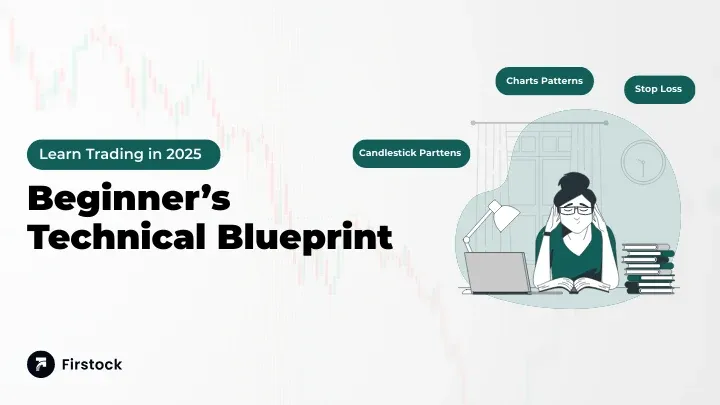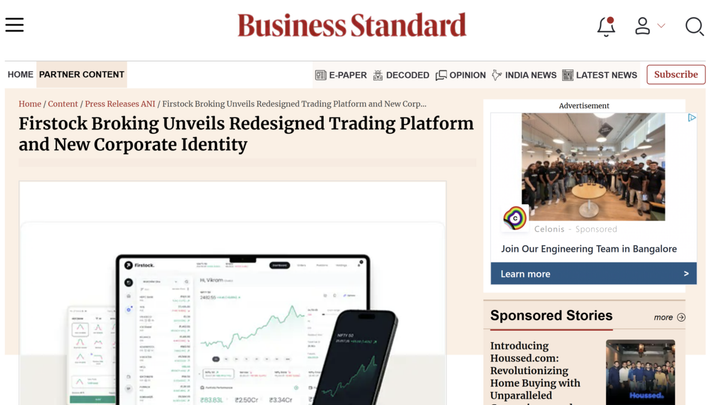Top 5 Technical Indicators Every Trader Should Know

Technical indicators are tools that help traders understand what the market might do next. By analyzing past price movements and trading volume, these indicators give clues about the strength and direction of a trend. This helps traders decide when to enter or exit a trade with more confidence. In this guide, we will explain four popular technical indicators: Relative Strength Index (RSI), Moving Average Convergence Divergence (MACD), Moving Averages, Candlestick Patterns, and Volume Weighted Average Price (VWAP). Each plays a unique role in helping you read the market better.
1. Relative Strength Index (RSI)
The Relative Strength Index, or RSI, is a tool that measures how fast and how much prices have changed over a certain period, usually 14 days. It gives a number between 0 and 100. When the RSI is above 70, it means the asset might be overbought—this could suggest that prices have risen too quickly and might soon fall. On the other hand, when the RSI falls below 30, the asset may be oversold, indicating prices might have dropped too much and could bounce back.
RSI is especially useful for spotting changes in momentum. For example, if the RSI moves below 30 and then starts to rise, it often means buyers are coming back into the market. Similarly, if RSI climbs above 70 and then turns down, it can signal that the buying pressure is weakening. Another important concept with RSI is bullish divergence. This happens when the price and RSI move in opposite directions. If the price makes a new low but RSI makes a higher low, it could mean the downward momentum is fading, hinting at a possible reversal upward. The opposite is true for bearish divergence.
2. Moving Average Convergence Divergence (MACD)
MACD is a momentum indicator that compares two moving averages of price — typically the 12-day and 26-day exponential moving averages (EMA). The difference between these two averages forms the MACD line. A second line, called the Signal line, is a 9-day EMA of the MACD line. The distance between these two lines is shown as a histogram, which helps visualize the strength of momentum.
When the MACD line crosses above the Signal line, it often indicates that bullish momentum is building. Conversely, when the MACD line crosses below the Signal line, it suggests bearish momentum might be increasing. Another useful signal is when the MACD crosses above or below the zero line. Crossing above zero supports an uptrend, while crossing below supports a downtrend. Like RSI, traders also watch for divergences between price and MACD, which can warn of potential trend changes.
3. Moving Averages
Moving averages smooth out price data to help identify the overall trend by averaging prices over a set number of days. The two most common types are the Simple Moving Average (SMA), which gives equal weight to all days, and the Exponential Moving Average (EMA), which gives more weight to recent prices, making it more responsive.
One key use of moving averages is trend identification. If the price stays above the 200-day SMA, it usually means the market is in a long-term uptrend. If it stays below, the market is likely in a downtrend. Traders also look for crossovers between moving averages.
For example, when a shorter-term moving average like the 50-day crosses above a longer-term moving average like the 200-day, it is called a “Golden Cross” and is often seen as a bullish signal. The opposite crossover is called a “Death Cross” and may indicate bearish conditions. Moving averages can also act as dynamic support or resistance levels, meaning prices often bounce off these averages during trends.
4. Candlestick Patterns
Candlestick charts show the open, high, low, and close prices for a given time period, forming shapes that traders use to predict future price movements. Certain candlestick patterns are known to signal potential reversals or continuations of a trend.
For example, a Hammer candlestick after a price decline can indicate that buyers are stepping in and a reversal might be near. Similarly, a Bullish Engulfing pattern, where a large green candle fully covers the previous red candle, can signal strong buying interest.
These patterns become more reliable when confirmed by higher trading volume or when they appear near important support or resistance levels. Combining candlestick patterns with other indicators like moving averages can give stronger trading signals.
5. Volume Weighted Average Price (VWAP)
VWAP is calculated by multiplying each price by its volume, summing these, and dividing by total volume. It shows the average price weighted by volume throughout the trading day. VWAP is widely used by institutional traders and acts as a benchmark for intraday price levels. Price above VWAP suggests bullishness; below suggests bearishness. It helps traders identify fair value and timing for entries/exits
Putting It All Together
Using these indicators together can improve your trading decisions.Putting It All Together
Individually, each technical indicator offers useful insights—but combining them can lead to more informed and higher-probability trading decisions. Here's how to approach it:
- Start with RSI to assess whether the market is potentially overbought or oversold. This gives you an early clue about possible reversals or trend continuations.
- Confirm momentum shifts with the MACD. Look for signal line crossovers and histogram direction to validate what the RSI suggests. Also, pay attention to whether the MACD is above or below the zero line to gauge broader trend direction.
- Check moving averages to determine the overall trend. Look for price relative to key averages (like the 50-day or 200-day) and watch for crossovers (Golden or Death Cross) to confirm bullish or bearish conditions. Moving averages can also serve as dynamic support/resistance zones.
- Use candlestick patterns to fine-tune your entries and exits. Look for reliable patterns like Hammers, Engulfing candles, or Dojis—especially near trendlines, support/resistance levels, or moving averages.
- Incorporate VWAP for intraday trades. Use it to identify value zones and institutional interest. If the price is consistently above VWAP, the bullish bias is stronger; if it's below, sellers may be in control.
By layering these tools, you can filter out noise, reduce the likelihood of false signals, and make more confident trading decisions. No single indicator is perfect, but together they provide a clearer picture of market conditions and potential trade setups.





